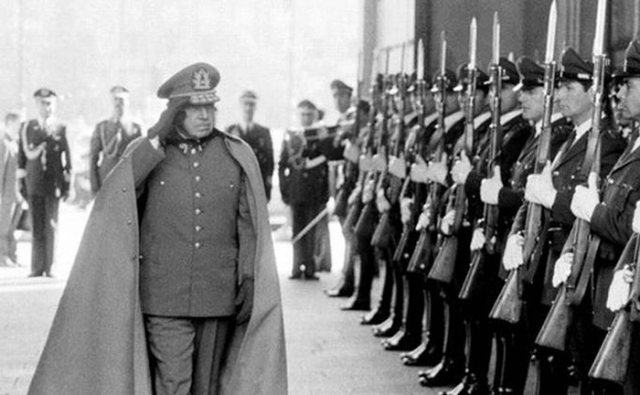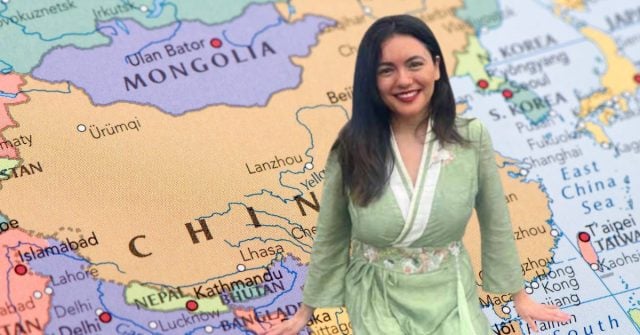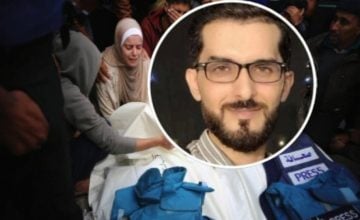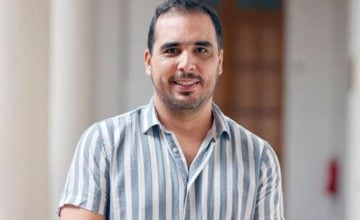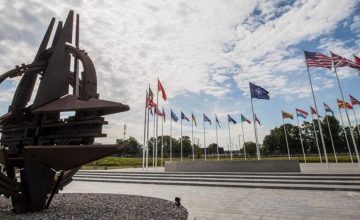As a result of the latest expertise carried out on the bones of Pablo Neruda, to determine if his death occurred due to natural causes or the intervention of third parties, I decided to bring to mind a series of emblematic cases that demonstrate the horror of the Chilean civic-military dictatorship, almost fifty years after the defenestration of Allende.Pablo Neruda?
«They are going to kill me, like they killed Lorca», recalls Manuel Araya (a former driver), that Neruda told him when he saw a warship in front of his house in Isla Negra.
There is no definitive conclusion in the reports released by the universities of Mac Master of Canada and Copenhagen of Denmark regarding the death of Pablo Neruda. The Chilean poet died at the end of September 1973 after the coup d’etat that overthrew the government of Salvador Allende.
However, for Julia Urquieta, a plaintiff lawyer in this case representing the Communist Party (Neruda was a member of the Communist Party), the studies carried out by academic entities allow us to affirm that there was an ‘intervention’ by the personnel that arrived where he was hospitalized at the Santa María Clinic and which ended up triggering his death.
“These are preliminary reports to which we have had access, but they are not conclusive. They do allow us to assert that there would be well-founded presumptions of the intervention of third parties because of the bacteria (clostridium botulinum) in Neruda’s body», specified Urquieta.
The remains of the agent were identified in a molar “and everything indicates, according to the different panels of experts, that the bacteria would have been inoculated from the outside. They were not part of the cancer and therefore, the death of the poet was not from the disease that he suffered», said the lawyer.
The nephew and lawyer of the Neruda family, Rodolfo Reyes, stressed that the death of his uncle was the result of the intervention of third parties who inoculated the poet with the bacteria.
«It was through his bloodstream that it reached his bones and, especially, a molar that was intact», explained Reyes.
Caravan of death
Once the dictatorship began, the regime took immediate measures in response to the so-called «internal war», a concept with which terrible murders and human rights violations were justified.
As part of these measures, Pinochet entrusted General Arellano Stark to lead an execution commando, this operation was known as the «Caravan of Death», and it is responsible for the assassination of union and political leaders and activists throughout the country. .
In northern Chile, the «Caravan of Death», in just one week, traveled through seven towns (La Serena, Copiapó, Antofagasta, Calama, Iquique, Pisagüa and Arica) leaving behind a bloodbath.
Arellano Stark’s Puma helicopter landed at the Esmeralda regiment, in Antofagasta, on October 18, 1973, where 14 political prisoners were transferred to Quebrada El Way to be executed.
Their assassinations was a scandal because the bodies were taken to the hospital morgue under appalling conditions. As it was possible to determine, the Mayor at that time, Joaquín Lagos Osorio, also chief of the Antofagasta division of the army, consciously decided to cover up the brutal crimes.
Lagos also ordered that only seven of those executed were to be reported in the news. The publications, obviously in El Mercurio de Antofagasta, were crude fabrications, accusing those killed of conspiring to carry out mass crimes in Antofagasta and of being engaged in political activism and in a terrorist conspiracy.
Seventy-one people murdered was the total balance of General Arellano Stark in his passage through the north.
Sergio Arellano Stark died with impunity, without having set foot in jail for a single day after being declared acquitted due to Alzheimer’s in March 2016, a complete mockery for hundreds of relatives who are still demanding justice.Victor Jara
In a communication from the Ministry of Foreign Affairs dated March 27, 1974, in response to a note from the OAS Inter-American Commission on Human Rights, it stated: “Víctor Jara: Deceased. He died from the action of snipers who, I reiterate, fired indiscriminately against the Armed Forces as well as against the civilian population».
However, Víctor Jara was arrested on September 12, 1973 at the State Technical University, where he was providing his services as a theater director. Jara was taken to the Chile Stadium, where after being separated from the other detainees, he was kept on the top of a gallery, along with other people considered dangerous. Between the 12th and 15th of that month, he was interrogated by army personnel.
September 15 is the last day he is seen alive, when in the afternoon Víctor Jara was taken from a line of prisoners who would be transferred to the National Stadium. The following day, September 16, at dawn, his body was found in the vicinity of the Metropolitan Cemetery by some residents, along with five other bodies, including that of Littré Quiroga Carvajal.
According to the autopsy report, Víctor Jara died as a result of multiple gunshot wounds, which add up to 44 projectile entry holes with 32 exit holes.
The Rettig Commission came to the conviction that the affected person was executed regardless of any process, constituting a violation of his fundamental rights which are supposed to be a responsibility to be protected by the State agents.
Joan Alsina
On September 15, 17 and 19, 1973, three military operations were carried out inside the San Juan de Dios Hospital. Military personnel belonging to a Battalion of the Yungay Regiment, from San Felipe, which was stationed in Quinta Normal and in the Diego Barros Arana Institute, arrested numerous people, five of whom were executed and two remain missing to date. One of these people was:
Joan Alsina Hurtos, a 31-year-old Spanish Catholic priest, who ministered in the San Ignacio de San Bernardo Parish and served as Chief of Staff at the San Juan de Dios Hospital, was executed on September 19.
He was detained in the basement of the Hospital by members of the Yungay Regiment. He then was taken to the courtyard of the Hospital where he remained for a long time. He was taken, first, to the Diego Barros Arana Institute and then to the Mapocho River where he was executed the same day. On the 27th, his body was found at the Legal Medical Institute; he was buried the next day in the San Bernardo Parish Cemetery. The death certificate states as the place of his death the Bulnes bridge over the Mapocho river, and indicates as its cause: «multiple gunshot wounds and injuries to the face».Carlos Prats González and Sofía Cuthbert Chiarleoni
Brigadier Pedro Espinoza Bravo entrusted the mission of organizing the assassination of the former commander in chief of the army to the head of the foreign department of DINA, the then army commander Raúl Iturriaga Neumann, who used the false name of Diego Castro Castañeda, and to officer Armando Fernández Larios, recalling that days before the attack he met Iturriaga in Buenos Aires. The assassination of Prats was carried out with the cooperation of Argentine citizens, and those in charge of DINA Exterior were the aforementioned Iturriaga and, as second in command, Captain José Zara Holger. The members of the DINA Mulchén Brigade who participated in the attack were:
Raúl Eduardo Iturriaga Neumann, aka Diego Castro Castañeda.
Guillermo Humberto Salinas Torres, aka Freddy Yáñez.
Pablo Belmar Labbé, aka Sergio Molina Correa.
Armando Fernández Larios, alias Armando Faúndez Lyon.
Juan Alberto Delmas Ramirez (murdered).
On Friday, September 28, 1974, the American Michael Townley, a DINA agent, entered Prats’ garage and placed an explosive device under the gearbox of the general’s car, a Fiat 125. On the 30th of that month, at 12:50 a.m., when Carlos Prats and his wife Sofía Cuthbert returned to their home at 3305 Malabia Street, Townley detonated the explosive by remote control, causing their instant death. According to the «strictly confidential and secret» police report, «the remains of the car were scattered in a radius of 50 meters and charred remains of human flesh were observed».
In the course of the process carried out by Minister Alejandro Solís, it was established that in the months prior to the double murder, “a DINA cell made up of more than six individuals (…) that had high-power explosives and it was composed of various officers of the Chilean army”, as can be verified in the first instance ruling. The members received support from Chilean companies located in Buenos Aires, such as Banco del Estado de Chile and Lan Chile.
Jose Toha
On March 15, 1974, José Tohá González, lawyer, Minister of Defense of the Allende government, socialist militant, died in the Military Hospital of Santiago.
On September 11, he was arrested at the La Moneda Palace together with a group of authorities and collaborators of the deposed government, and transferred with them to the Military School, where he remained for a few days. Later, along with most of the members of the ousted cabinet, he is sent to Dawson Island, where he is subjected to repeated ill-treatment and illegitimate coercion by the military personnel who were in charge of the compound. Still deprived of liberty, he was successively transferred to different hospitals, such as the Air Force Hospital and the Military Hospital of Santiago. As a result of his imprisonment and the treatment he received, his physical condition seriously deteriorated, losing 27 kilos of weight, reaching a weight of about 49 kilos, with a height of 1.92 m. Precisely the reason for his transfer from the south to Santiago had to do with the advanced state of malnutrition in which he found himself, which prevented him from even moving from his bed when he was already in the Military Hospital. In general, all the testimonies received indicate that his physical and psychological condition had seriously deteriorated. The autopsy protocol itself reveals his advanced state of malnutrition.
The official version of the events, delivered to the family of the affected person, indicates that he committed suicide, hanging himself with his belt, in a closet. A version that the relatives do not accept, maintaining that his extreme state of weakness prevented him from even moving around by himself and that the height of José Tohá was greater than that of the place where they say he would have hung himself.
On October 12, 2012, the result of a third expert opinion ordered to the University of Concepción by visiting minister Jorge Zepeda, maintained that the former Secretary of State did not commit suicide, but was murdered by strangulation. His body was buried for the third time on November 19, 2012. On December 4, 2015, visiting minister Jorge Zepeda sentenced retired Air Force colonels Ramón Cáceres Jorquera and Sergio Contreras Mejías to three years imprisonment (sentence remitted), as responsible for the torture of Tohá. This conviction was confirmed on January 18, 2017.Operation Columbus
Also called the case of the 119. It was an operation mounted by the DINA in 1975, intended to cover up the forced disappearance of 119 opponents of the military dictatorship of Augusto Pinochet. The objective of the operation was to make national and international public opinion believe -through the publication of false information in the media in Chile and abroad- that the disappeared had died in clashes with foreign security forces or had been victims of internal purges. Most of those killed were members of the Movimiento de Izquierda Revolucionaria (MIR). However, among those that were killed, there were also militants from the Communist Party (PC), the Socialist Party (PS), the Movimiento de Acción Popular Unitaria (MAPU), the Communist League of Chile and the Christian Democratic Party (DC) and some people that had no political militancy.
On April 16, 1975, a mutilated body was found on Sarmiento Street in Buenos Aires, carrying an identity card that identified him as the Chilean civil engineer David Silberman. Silberman was a member of the Communist Party and had been the general manager of Cobre Chuqui until the 1973 coup d’état. He was serving a thirteen-year sentence in the Santiago Penitentiary -for violation of the State Security Law- after having been prosecuted by a court martial, when he was kidnapped on October 4, 1974 by DINA agents. Since then, his whereabouts had been unknown, until his mutilated body appeared in Argentina. Years later, former agent Enrique Arancibia Clavel would confess that the alleged appearance of Silberman in Buenos Aires had been an operation – baptized «Colombo» – commissioned by Raúl Iturriaga Neumann to make a «Chilean subversive» appear in Argentina.
In the following months, the main Chilean newspapers began to publish stories about ‘presumed’ disappeared persons who were alive outside of Chile. On June 13, 1975, La Tercera published an article entitled «Chilean extremists are trained in Tucumán», in which it was highlighted «that among the extremists there are a large number of elements of the MIR and other Marxist groups who are publicly listed as missing», while the media that belonged to El Mercurio published, in those days, headlines such as «Chilean extremists are trained in guerrillas» (La Segunda, June 12); «Passage of armed miristas to Chile» (El Mercurio, June 16) and «Extremists cross the border» (Las Últimas Noticias, June 16).
In the first days of July of that year, the Military Junta suddenly canceled the visit to Chile of the UN Human Rights Commission, scheduled for July 11, whose objective was to investigate the complaints of human rights violations. According to the government, it was not a cancellation, but a «postponement until there was a more opportune moment». That same July 11, the day the commission was originally going to arrive, two charred bodies appeared, inside a car, in the city of Pilar, north of Buenos Aires, with the identifications of the Chileans Jaime Robotham and Luis Guendelman, members of the MIR, who had been detained and disappeared since 1974. On both corpses, there was a canvas that read: “Dismissed by the MIR. Black Brigade”. Eight days later another body appeared, this time with an alleged identification of Juan Carlos Perelman, also a Mirista, detained in Santiago and disappeared since February 20, 1975.
The magazine Lea, from Buenos Aires, published on July 15 a list of 60 «Chilean extremists eliminated by their own comrades in struggle» in Argentina, Colombia, Venezuela, Panama, Mexico and France. Previously, on June 25, 1975, the Novo O’Día newspaper from Curitiba, Brazil, had reported on the murder of 59 Miristas in «confrontations with Argentine government forces in Salta».
In the following weeks, based on what was reported by the two foreign publications and the cables of the UPI agency that had reported the discovery of the charred bodies in Buenos Aires, the main Chilean media outlets began to replicate the news of these alleged confrontations, with headlines such as «Massacre between Miristas exposes crude maneuver against Chile» (La Tercera, July 16), «Bloody internal «vendetta» inside the MIR» (Las Últimas Noticias, July 16), «Fierce struggle between Chilean Marxists» (La Segunda, July 18), «Identified 60 murdered Miristas» -with the epigraph «Executed by their own comrades»- (El Mercurio, July 23), «The MIR has assassinated 60 of its men» (La Tercera, cover of July 23) and «Bloody struggle of the MIR abroad» (Las Últimas Noticias). The evening newspaper La Segunda, based on the Novo O’Día publication, headlined the front page on July 24, 1975, “Exterminated like mice”, a text accompanied by the epigraph “59 Chilean Miristas fall in military operation in Argentina”.
The judicial process of Operation Colombo was investigated by the minister of the Court of Appeals of Santiago, Víctor Montiglio.Because of this court case, the minister requested the dismissal of Augusto Pinochet, which was granted on July 6, 2005 by the Santiago Court of Appeals and confirmed by the Supreme Court on September 14 of the same year. Then, he prosecuted Augusto Pinochet on December 28, 2005 and granted him provisional release on bail, for which he was provisionally released on January 9, 2006. Pinochet was definitively dismissed in December 2006. On May 27, 2008 Minister Montiglio issued an indictment and an arrest warrant against 98 implicated in the crimes, including members of the Armed Forces and civilians.
In 2013, the first criminal complaint was filed against Agustín Edwards Eastman, owner of El Mercurio and La Segunda, for his role in the Colombo operation.Case: Calle Conferencia I and II
Calle Conferencia I and II is the name that was given to two clandestine operations of the DINA that ‘decapitated’ the leadership of the Communist Party during the months of May to November-December 1976. Both operations were organized by the Lautaro Brigade, whose existence was kept secret until 2007.
ON May 12, 1976, several leaders of the Communist Party (PC) were kidnapped by the DINA from a safe house on Calle Conferencia No. 1587, commune of Santiago. Subsequently, and as part of the same operation, Víctor Díaz López, second in command of the clandestine leadership of the PC and father of Viviana Díaz, who was a leader of the Association of Relatives of the Detained-Disappeared, was arrested on Bello Horizonte No. 979 in the commune of Las Condes.
In fact, the detainees were transferred to a secret compound: the Simón Bolívar Barracks, located in La Reina. It is not known exactly how many communist prisoners were transferred there. It seems that all were (Jorge Muñoz, Gladys Marín’s husband, Fernando Ortiz, father of Estela Ortiz, former Director of the Junji, widow of José Manurl Parada, one of the victims of the Degollados case of 1985 and Waldo Pizarro, the husband of the AFDD leader, Sola Sierra, father of Lorena Pizarro.
Víctor Díaz López’s head was covered with a plastic bag before he was injected with cyanide. According to agent Ricardo Lawrence, Pinochet personally went to the Casa de Piedra detention center in Cajón del Maipo to see Díaz before being transferred to the Simón Bolívar barracks to be assassinated.
The command of kidnappers and assassins was made up of members of all the branches of the Chilean Armed Forces (Navy, Air Force, Army and Carabineros), including civilians, army officers and dozens of non-commissioned officers from all the branches. They were all under the direction of Juan Morales Salgado, who was very important at that time, and responsible for the personal security of Manuel Contreras, head of DINA. The assassination orders emanated directly from Contreras who transmitted them to Salgado.
In the Calle Conference II case, also known as ‘the case of the thirteen’, eleven members of the new clandestine leadership of the PC were kidnapped with two militants from the MIR, between November 29 and December 20, 1976. Most of the bodies were thrown into the sea.Orlando Letelier and Ronni Moffitt
Orlando Letelier del Solar and Ronni Moffitt died on September 21, 1976, in Washington, D.C. United States, when a bomb placed under the floor of the vehicle in which they were traveling exploded. Also in the car was Moffitt’s spouse, Michael Moffitt, who escaped unharmed.
Orlando Letelier, 44, had been ambassador of the government of President Allende to the United States, having also served, during that government, as Minister of Foreign Affairs and Defense, the latter position he held as of September 11, 1973. Letelier was arrested that same day, in his own offices of the Ministry of Defense. He spent a long period in prison, first in the Tacna Regiment, then in the Military School. From there, he was taken to the Dawson Island detention camp for 8 months. He then spent some time underground at the Air Warfare Academy, from where he was finally transferred to the Ritoque camp, where he regained his freedom, going into exile.
He first traveled to Venezuela and later to the United States, where he worked at the Institute for Policy Studies, in Washington, D.C. During this period, he also resumed his political work within the Socialist Party (he was a member), fulfilling important functions in that group and in opposition activities to the military dictatorship abroad. Shortly before his death, his Chilean nationality was taken away.
Ronni Moffitt, 25, was a US citizen and also worked at the Institute for Policy Studies.
In the judicial investigation of these facts carried out by the North American justice, the confessions of three interveners as responsible for the explosion, coincidentally gave an account of the participation in the murder, both in its planning and in its execution, of agents of the DINA.
The highest authorities of that security service are involved in the intellectual authorship of the crime, who entrusted its execution to one of their agents who had previously received the mission to carry out other work abroad.
First, they tried to obtain false passports to enter the United States from Paraguay, when this was not achieved, false official Chilean passports issued by the Foreign Ministry were used.
The prior follow-up work on the victim, who in principle was just Letelier, was carried out by a couple of agents who traveled to the United States for this purpose.
Members of an anti-Castro clandestine group from the United States assisted in the execution of the crime, who helped both in making and placing the bomb that would blow up the victim’s vehicle. Finally, they themselves would be the ones to activate the remote control mechanism to make it explode.
According to their respective autopsy protocols, Letelier died from bleeding caused by the traumatic amputation of his lower extremities and Moffitt died from aspiration of blood, laceration of the larynx and of the right carotid artery.
After the terrorist act and once it became clear that Chilean agents were involved in it, various maneuvers were carried out in the country to prevent the clarification of the crime. Among them, is the presentation of persons other than those involved to answer the letters rogatory (exhortations) presented by the US government and, according to testimonies, the destruction of incriminating statements made before the Chilean Military Prosecutor who was conducting the investigation.
The ovens of Lonquén
The ‘ovens of Lonquén’ was a place where the remains of disappeared detainees were found on November 30, 1978. These people had been arrested in the town of Island of Maipo on October 7, 1973.
Fifteen peasants, all male, between the ages of 17 and 51, were detained by police officers in the town of Isla de Maipo: Sergio Maureira Lillo and his four sons, Rodolfo Antonio, Sergio Miguel, Segundo Armando and José Manuel; Óscar Hernández Flores and his brothers Carlos and Nelson; Enrique Astudillo Álvarez and his two sons Omar and Ramón; and the four young men, Miguel Brant, Iván Ordóñez, José Herrera and Manuel Navarro. All of them were taken from their homes to the Island of Maipo, where they were last seen alive.
A peasant went to the offices of the Vicariate of Solidarity. He denounced that in some ovens of a lime mine he found the remains of human bodies. The vicar Cristian Precht Bañados coordinated a commission to verify these facts. In this commission, participated: Enrique Alvear, auxiliary bishop of Santiago; Vicar Precht and Javier Egaña, Executive Secretary of the Vicariate; the chief lawyer of the Vicariate, Alejandro González; the lawyer Máximo Pacheco; the director of the magazine Qué Pasa, Jaime Martínez and the deputy director of the magazine Hoy, Abraham Santibáñez. On November 30, 1978, this commission went to the place, some abandoned lime ovens, where the presence of human remains was denounced. According to the journalist Abraham Santibáñez, in those ovens they found: “Pieces of yellowish skulls, with traces of scalp; loose hairs, black; torn clothes in which one can recognize blue jeans, (and) a man’s vest”.
Finally, in the democratic period, the ex-carabineros were sentenced for the crime of qualified kidnapping: Lautaro Castro Mendoza, chief of the patrol, to 20 years in prison for his responsibility as the perpetrator. David Coliqueo Fuentealba, Justo Ignacio Romo Peralta, Félix Héctor Sagredo Aravena, Jacinto Torres González and Juan José Villegas Navarro were sentenced to 15 years in prison. Pablo Ñancupil Raguileo was sentenced to 900 days in prison. The case went to the second instance, that is, the San Miguel Court of Appeals, which confirmed the sentence. On June 16, 2018, the Supreme Court confirmed the sentence of 6 former police officers since the chief of the police officers Lautaro Castro died before the sentence.André Jarlan
On September 4 and 5, 1984, eight people died in the framework of the demonstrations carried out on the occasion of the Tenth Day of National Protest.
André Joachim Jarlán Pourcel, 43 years old, was a priest of French nationality, and served in the Parish of La Victoria. He was killed by a bullet fired by Carabineros personnel.
On the afternoon of September 4, a group of journalists was at the intersection of 30 de Octubre and Ranquil streets, in the town of La Victoria, covering the events of the day of protest. In that sector, there were barricades and bonfires. A group of carabineros approached on 30 de Octubre street. When the residents warned that they were approaching, the journalists fled. A police officer fired shots into the air over the head of one of the reporters, who, lagging behind, had hidden behind an electric light pole. The journalist shouted that he was from the press. Carabineros advanced down Ranquil street and the journalist spoke with an officer. The uniformed officers withdrew, continuing their patrol along 30 de Octubre Street. The two bullets fired had gone through the wooden wall of the second floor of the rectory located on Calle Ranquil. One of those bullets hit the priest Jarlán in the neck and caused his death.
Multiple and concordant testimonies received show the disproportion of the police action, since the use of firearms was not justified in the face of the events of the moment and in a densely populated place.The ‘Degollados’ (Decapitated) Case
On the morning of Thursday, March 28, 1985, Santiago Nattino was approached at the intersection of Apoquindo and Badajoz streets by a subject who pointed a gun at him and made him get into a vehicle that was waiting on the corner. That same night, unknown persons entered an office of the Chilean Educators Union Association (Agech), located at Londres 75B and kidnapped four leaders: Mónica Araya, Eduardo Osorio, José Toloza and Alejandro Traverso. The four would be released the next day, after a full day of interrogations.
Just after 8:30 a.m. on Friday the 29th, José Manuel Parada and Manuel Guerrero were talking outside the Latin American College, at Avenida Los Leones No. 1401, when suddenly an Opala brand station wagon stopped in front of them. Three subjects got out and violently grabbed the sociologist and the professor. Of the two teachers who witnessed the scene, one was shot in the abdomen when he tried to intervene. Immediately the station wagon left the scene in an unknown direction. Moments before the kidnapping, a police helicopter had passed low over the sector and an individual had placed himself on the corner and had begun to divert traffic.
The subsequent investigation would determine that Nattino, Parada and Guerrero were taken to the Dicomcar headquarters on Calle Dieciocho, the same facility where the Joint Command had operated the previous decade. In that place, the three were tortured. Later, at dawn on Saturday the 30th, they were taken by vehicle to Quilicura. The professionals had their throats cut and their bodies left among some bushes, in front of the El Retiro farm, near the Pudahuel airport.
After several years of investigation, in 1994 Judge Milton Juica sentenced three members of the secret police service to life imprisonment for the murder, and thirteen other officials to terms ranging from 41 days to 18 years in prison. Subsequently, the Court of Appeals increased the sentences of life imprisonment to six. The following year, the Supreme Court finally upheld five of the six life sentences: Guillermo González Betancourt, José Fuentes Castro, Alejandro Sáez Mardones, Claudio Salazar Fuentes and Miguel Estay Reyno. In the case of Patricio Zamora Rodríguez, the sentence was reduced to 15 years and one day in prison.
Since the end of 2017, only Miguel Estay Reyno served his sentence, and died in 2021, while the other convicts were released without serving their life sentence. This situation was denounced by various human rights organizations, mainly by the Funa Commission, which has investigated and denounced impunity for these types of crimes.The ‘Quemados’ (Burnt) Case
The opposition to Pinochet had great hope that 1986 would be «The Year of Victory» and scheduled a series of days of protest that were to be crowned with a great national strike on July 2 and 3. In almost every town, the opposition political groups prepared themselves. The government’s response was to send the military to patrol the streets to maintain control.
In the Los Nogales neighborhood, Estación Central de Santiago commune, a small group of people were setting up barricades in a strategic sector, on the morning of July 2. The photographer Rodrigo Rojas de Negri, who worked for an international agency that covered the news of the strike, accompanied the group. The brigade carried 5 used tires and a can of gasoline. At 8 in the morning they were intercepted at the corner of Avenida General Velásquez and Calle Germán Yungue by a military patrol commanded by Lieutenant Pedro Fernández Dittus. The patrol was made up of 3 civilians, 5 NCOs, and 17 soldiers. Most of the youths managed to escape, except for Quintana and Rojas de Negri.
The military doused the detainees with gasoline and set them on fire. While both young men were on fire and unconscious, they were wrapped in blankets by members of the patrol, loaded into a military vehicle and taken to an isolated road some 20 kilometers from the capital. Once there, they threw them into an irrigation ditch, assuming they would die. Later, they were found by agricultural workers and taken to the Posta Central, for their attention.
Rojas de Negri died four days later due to the seriousness of his injuries. Quintana, on the other hand, was transferred to the Hospital del Trabajador on July 6. Despite the second and third degree burns that she suffered on 62 percent of her body, with many broken teeth (hovering between life and death for weeks), she ultimately survived. She then underwent long medical treatment in Chile and Canada. Her face was left with burns and scars.
It was in 1993 when the Supreme Court sentenced Fernández Dittus to 600 days in prison for his responsibility in the death by burns of Rojas de Negri and the serious burns received by Quintana.
In March 2019, Minister Carroza sentenced eleven retired soldiers for the crimes of qualified homicide, with respect to Rodrigo Rojas de Negri, and frustrated qualified homicide, with respect to Carmen Gloria Quintana. Julio Ernesto Castañer González, Iván Humberto Figueroa Canobra and Nelson Fidel Medina Gálvez were sentenced as perpetrators to ten years and one day in prison. While Luis Alberto Zúñiga González, Jorge Osvaldo Astorga Espinoza, Francisco Fernando Vásquez Vergara, Leonardo Antonio Riquelme Alarcón, Walter Ronny Lara Gutiérrez, Juan Ramón González Carrasco, Pedro Patricio Franco Rivas and Sergio Hernández Ávila were sentenced as accomplices to three years. and one day in prison, with the benefit of probation.
In March 2022, the Santiago Court of Appeals modified the sentence to increase the sentences handed down against those convicted. In relation to the perpetrators of the crimes, the sentences were modified to twenty years in prison. Meanwhile, the Court rejected the res judicata objection that had acquitted Pedro Fernández Dittus in the first instance, who was also convicted as the author. The sentence also acquitted Luis Zúñiga González, Jorge Astorga Espinoza and Sergio Hernández Ávila.
One final comment… ¡The horror!
Jorge Molina Araneda
